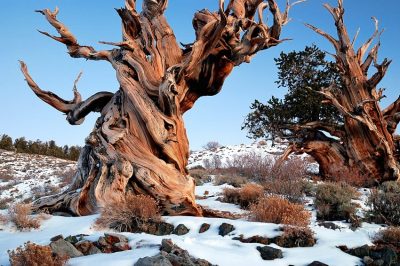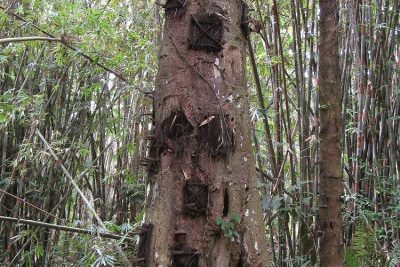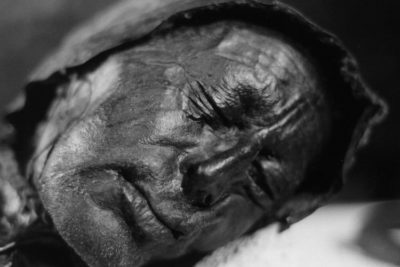The Story of the Last Tree of Ténéré is Short and Sad
Share

Tree of Ténéré in 1961. (Michel Mazeau / Wikimedia Commons)
The story of the last Tree of Ténéré is short and sad. The tree had roots that ran at least 100 feet deep and was surrounded on all sides by 400 km of nothing, but sand. The Ténéré wastelands of the Sahara were once populated with a rich forest of Acacia trees. But by the 20th century all but one had been wiped out.
A sacred symbol of life in the desert
For at least 300 years, the Tree of Ténéré is believed to have been the most isolated tree on earth. The tree was a kind of miracle. It was also sacred to the people who lived there and it was marked on the caravan routes. It was treated as a sacred symbol of life in the desert.
The Acacia tree is believed to have sprouted when the desert was a hospitable place. For years, it was also the only evidence to a once-greener Sahara. If legends have to be believed, the Ténéré wastelands were once populated with a rich forest of Acacia trees.
In the prehistoric period, the region was said to be a sea floor
During a prehistoric period, known as Carboniferous, the region was said to be a sea floor. Later, it turned into a tropical forest. During this period, dinosaurs are believed to have roamed the region. It was once also the hunting ground of a crocodile-like reptile, sarcosuchus.
Modern humans are said to have inhabited the region of Ténéré until the Paleolithic period some 60,000 years ago. During the Neolithic period, 10,000 years ago, human hunters are said to have created rock engravings and paintings.
But by the 20th century all but one had been wiped out.
A landmark on several European military maps
With hordes of desert explorers chancing upon the hardy tree, the Tree of Ténéré turned out to be quite well known. It was also included as a landmark on several European military maps during the 1930s.
It first gained global prominence in 1939 when a European officer named Michel Lesourd of the Central Service of Saharan Affairs chanced upon the tree. He was so mystified that he wrote that one has to see this tree to believe it. He, however, did not understand as to why camels hadn’t eaten its leaves till now and also as to why the local tribal people had not chopped it down to use it as firewood.
The tree was a tribal order that was respected for generations
He said the Tree of Ténéré was a kind of miracle and also sacred to the people who lived there and it was treated as a sacred symbol of life in the desert. The tree was taboo for the caravanners. For the nomadic Tuareg people the tree was a sacred object that was respected for generations. They never used it for firewood. They even did not allow their camels to graze on it.
Every year the azalai (a semi-annual salt caravan route practised by Tuareg traders) have been gathering around the tree before crossing the Ténéré. The Acacia is either the first or the last landmark for the azalai.
It failed to stand the rest of the 20th century
A French ethnologist of that time, Henri Lhote, said it is an Acacia that is having a degenerative trunk. It was sick or ill in aspect. He, however, noted that the tree has beautiful green leaves with yellow flowers. Thanks to a nearby well the roots of the hardy tree could drink from the water table of at least 100 feet underground. However, it failed to stand the rest of the 20th century.
In 1973, an inebriated Libyan truck driver ran his vehicle into the tree in spite of having another 400 km on either side to go around it. None the less, he broke the tree clean off. In that instant, the last Tree of Ténéré was no more.
With the fall of the loneliest tree in the world, the name now goes to another tree on New Zealand’s sub-antarctic Campbell Island.
Its remains were relocated to the Niger National Museum in Niamey
After the tree was felled, its remains were relocated to the Niger National Museum in Niamey.
In its place, today, there is a kind of weird metal tree. It is being used to mark this spot and honour its existence. The metallic Tree of Ténéré is today a place for an important ceremonial gathering.
Metallic Tree of Ténéré
The tree is located in the Black Rock Desert in Nevada, which is a semi-arid region of lava beds and playa. You can experience the past ritual anew, as the Tree of Ténéré provides a space for contemplation, creativity, community and play to enthusiasts of today.

The metal sculpture honouring the lost Tree of Ténéré. (Holger Reineccius / Wikimedia Commons)
During day time, the Ténéré made of metal and LED bulbs offer shade and adventure. One can climb its highest limbs that are four stories high. During nights, the LEDs that are hidden behind each leaf start to glow. Meanwhile, the treetop of the metal tree turns into the largest interactive light canvas.
When a community of enthusiasts raises its voice and biorhythms, it creates breathtaking colours and beautiful patterns in the canopy.
Enjoyed this article? Also, check out “Bristlecone Pine: The Oldest Trees of Our Planet“.
Fact Analysis:
STSTW Media strives to deliver accurate information through careful research. However, things can go wrong. If you find the above article inaccurate or biased, please let us know at [email protected]













